A couple years ago, one of my favorite singers released a new visual album (her third one—sorry Beyoncé, you’re not a pioneer). Called Blue, it showcased island imagery from around the world, including a mysterious beach covered in icebergs I assumed was somewhere in Scandinavia.
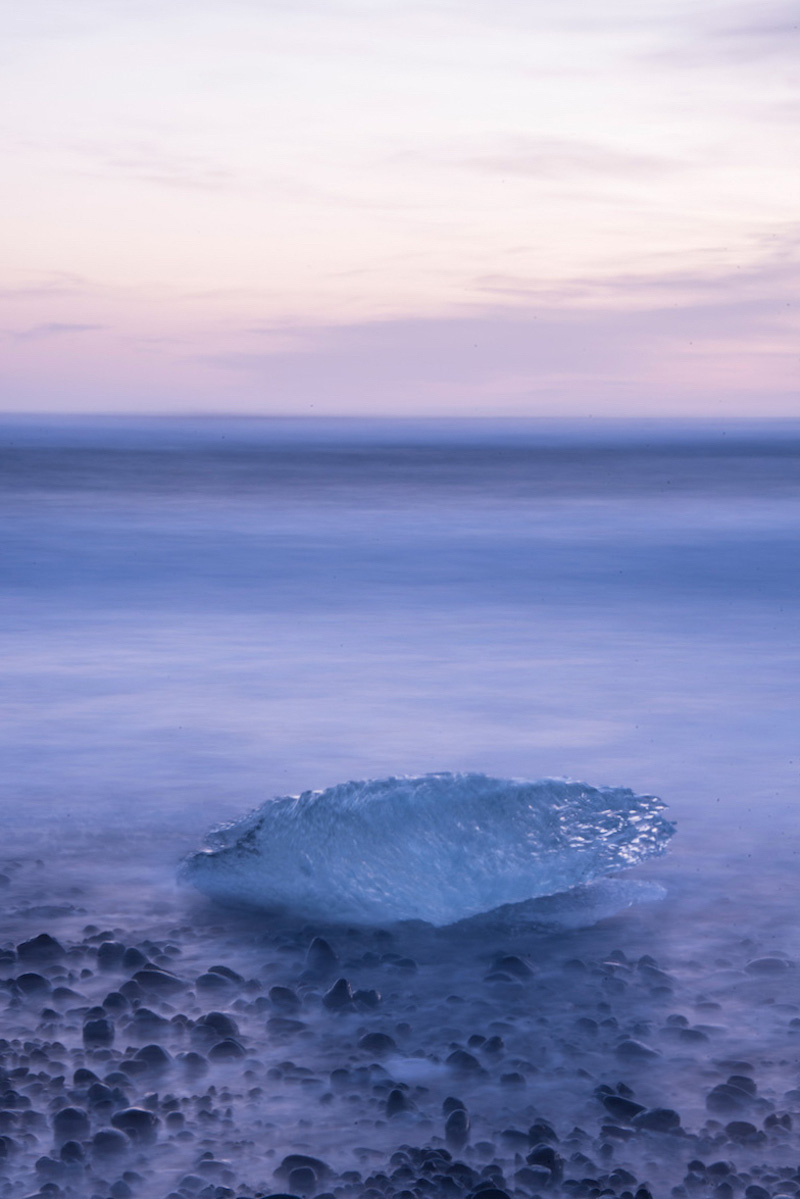
My research initially led me to believe this beach was Jökulsárlón Glacier Lagoon, a popular tourist destination located just east of Vík, on Iceland’s southern coast.
On my terrifying winter road trip through the country, however, I discovered that Iceland’s aptly-nicknamed “Diamond Beach” is not one in the same with the glacier lagoon, even if both share the same icebergs.
Where is Iceland’s Diamond Beach?
Depending on what the weather’s doing when you visit, you could theoretically walk from Jökulsárlón Glacier Lagoon to Diamond Beach, officially known in Icelandic as Breiðamerkursandur. The mouth of the lagoon, you see, opens into the ocean, and some of the icebergs wash up on Diamond Beach, which is located to the east of the mouth.
Practically speaking, the best strategy for visiting Diamond Beach (and Jökulsárlón Glacier Lagoon, for that matter) and then head back along the Ring Road toward them. This allows you to time your visit to the Diamond Beach and Jökulsárlón according to the type of light you want to enjoy.
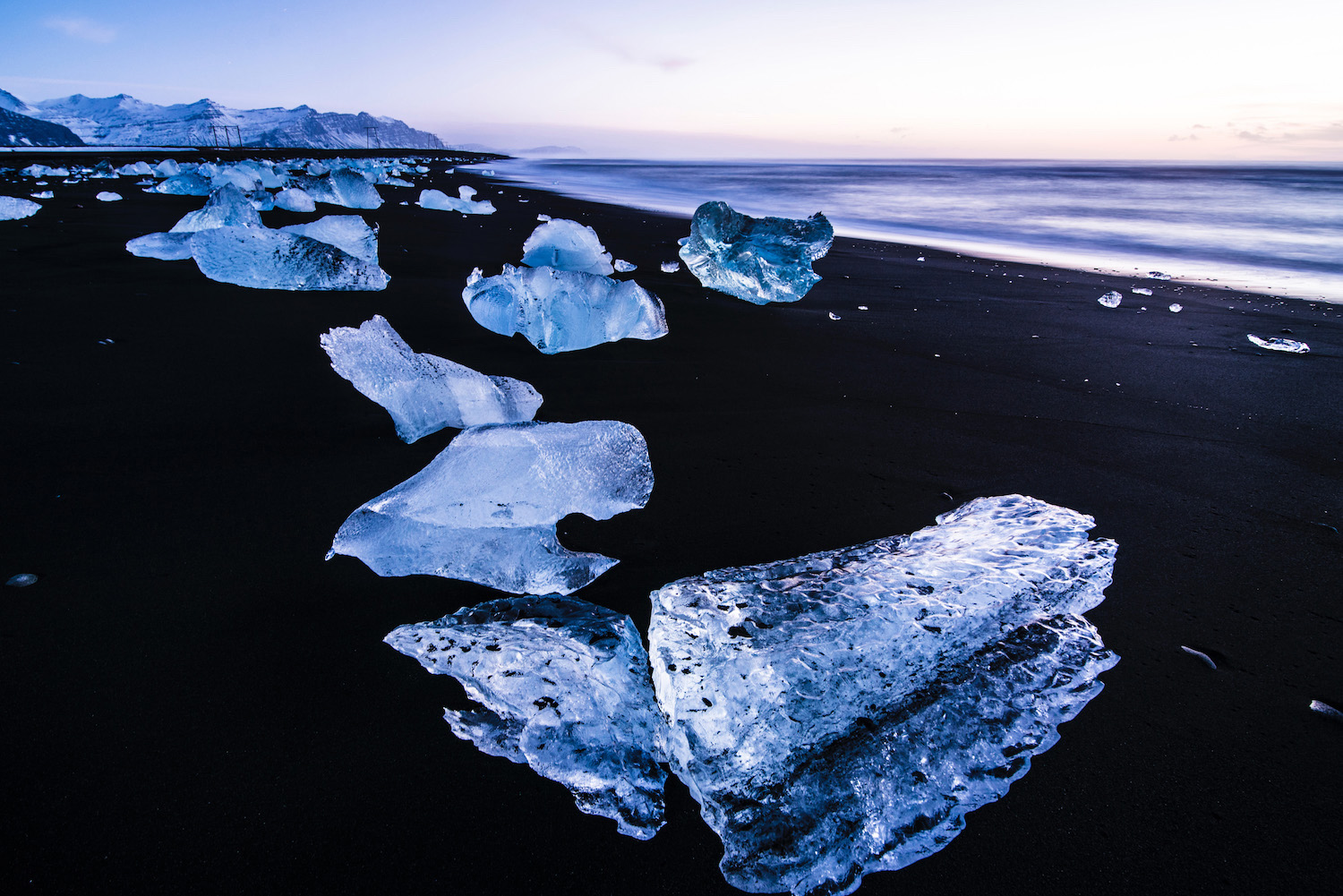
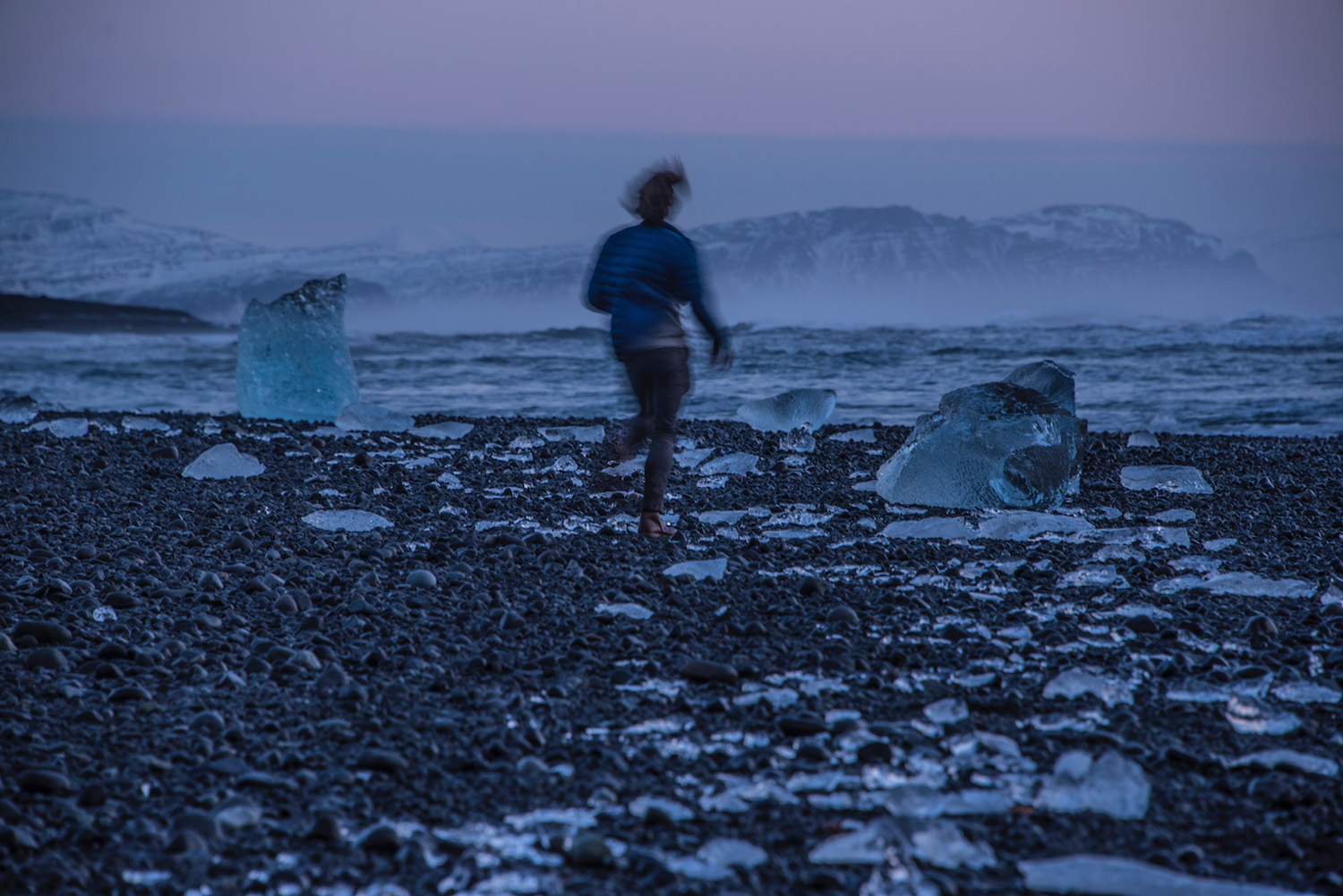
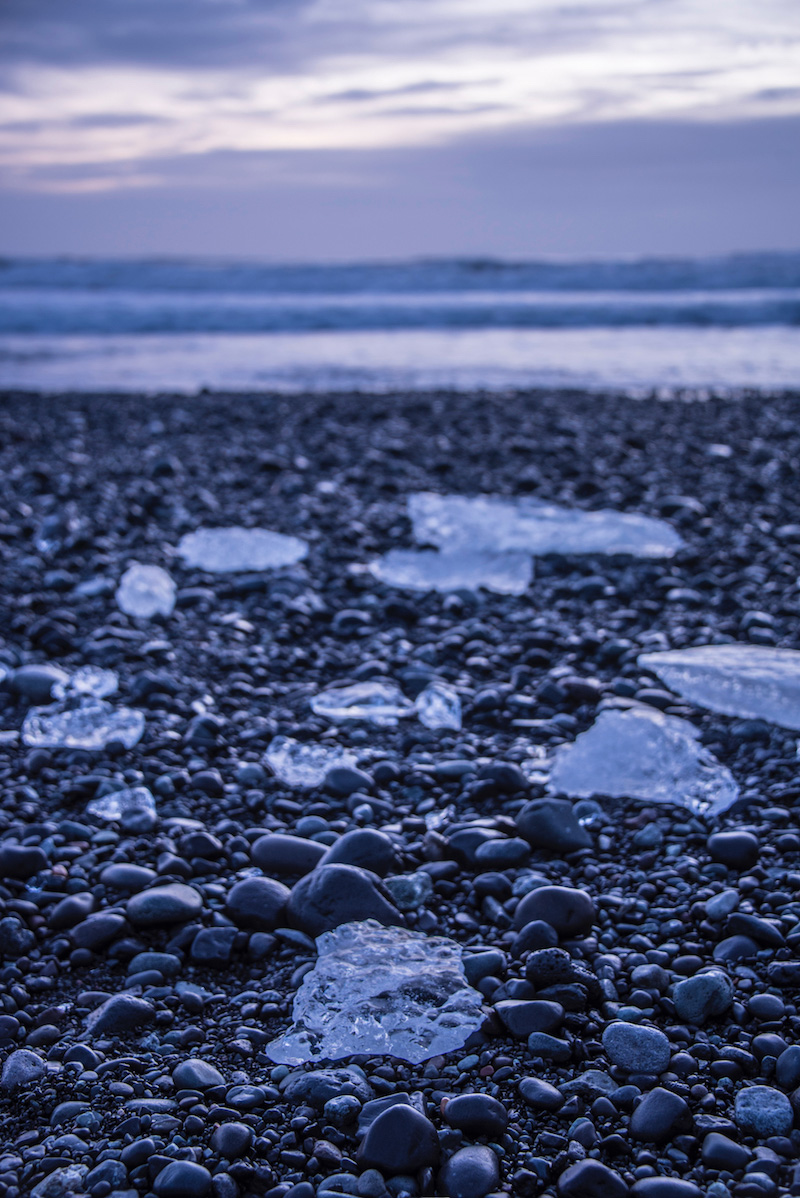
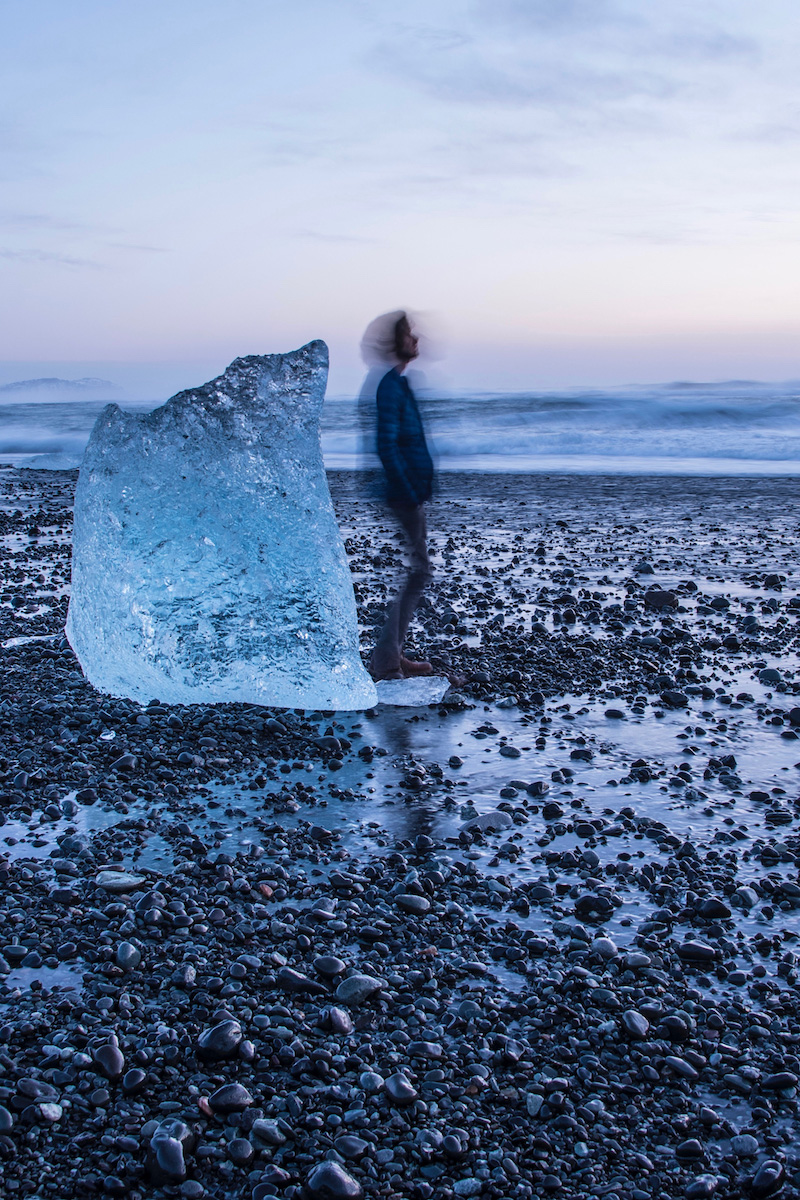
What Is the Best Time to Visit Iceland’s Diamond Beach?
There are two ways to approach this question. The first, continuing logically from the last paragraph, is the time of day. In general, sunrise and sunset are the most beautiful times of day, and this is especially true at Diamond Beach, given the prismatic quality of the icebergs and how the colors of the sky contrast with the beach’s black, volcanic sand and the blue sea.
The other questions to ask is what time of year you should visit Diamond Beach. Obviously, the days are longer and the weather warmer in late spring, summer and early autumn than during winter and its periphery. On the other hand, colors can be more dramatic during the colder month, to say nothing of Iceland’s most famous light show.
Can You See the Northern Lights Over Iceland’s Diamond Beach?
Technically, yes, if you’re visiting from about September to March and the night sky is clear and dark—this aurora forecasting tool can help you set realistic expectations. On the other hand, since the sea is to the south of Diamond Beach the visual appeal of the beach is seeing the sand, icebergs and water all together, it isn’t necessarily an ideal vantage point for the Northern Lights.
Instead, Jökulsárlón Glacier Lagoon (which I’ve deliberately avoided writing much about in this article—it was kind of a let down) is a better place to watch the Northern Lights and see their colors reflect on the surface of glassy water.
The Bottom Line
Although Jökulsárlón Glacier Lagoon gets most of the action from tourists, Diamond Beach (a.k.a. Breiðamerkursandur) is the most beautiful place in southern Iceland. Since Diamond Beach is located at the confluence of the lagoon’s mouth with the ocean, it’s an easy add-on to trips that already include a stop at Jökulsárlón.

Robert Schrader is a travel writer and photographer who’s been roaming the world independently since 2005, writing for publications such as “CNNGo” and “Shanghaiist” along the way. His blog, Leave Your Daily Hell, provides a mix of travel advice, destination guides and personal essays covering the more esoteric aspects of life as a traveler.








